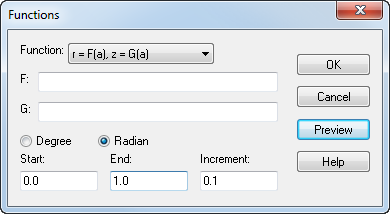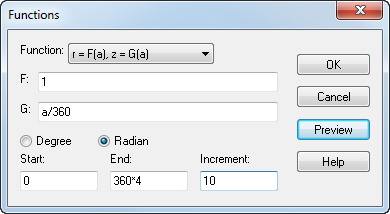Use the function r = F(a), z = G(a) for polar functions with a Z coordinate that is specified as a function of the angle.
In the Function list, select r = F(a), Z = G(a).

F,G, and H — These are the fields where you build your function. You use the operations described in the Equations section.
Degree — Select this option to evaluate the function in degrees.
Radian — Select this option to evaluate the function in radians.
Start — This sets the starting point for the range over which your function is evaluated.
End — This sets the ending point for the range over which your function is evaluated.
Increment — This sets the value added to or subtracted from the previous point evaluated for the function to determine the next value to be run through the function.
Preview — This generates the curve and displays it for your review but does not apply the generated function to the drawing as geometry. Depending on your start and end points and the increment, it may take a while to evaluate and build the preview image.
r = F(a), Z = G(a) example
You can use the r = F(a), Z = G(a) function to model a helix, for example:

